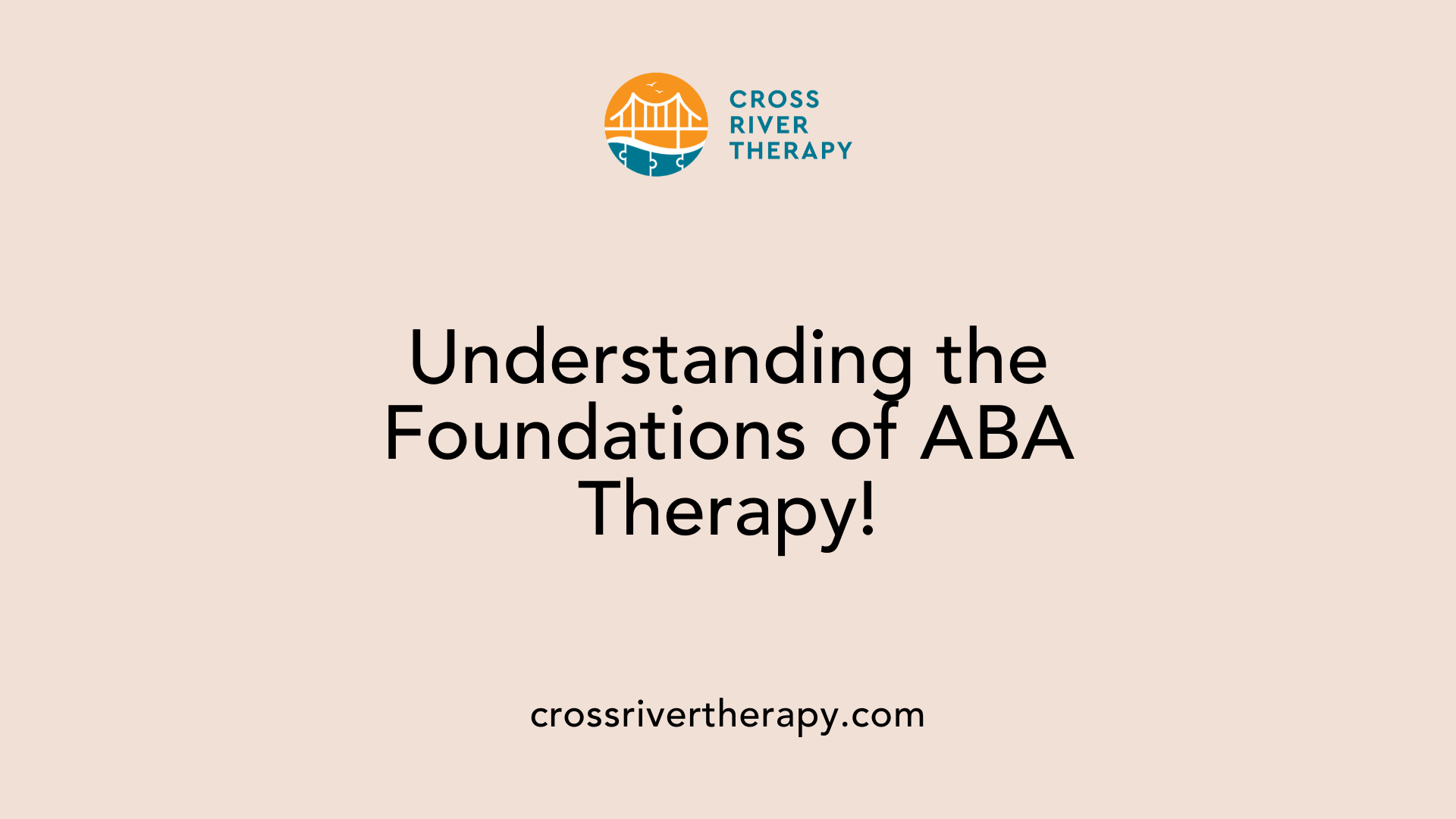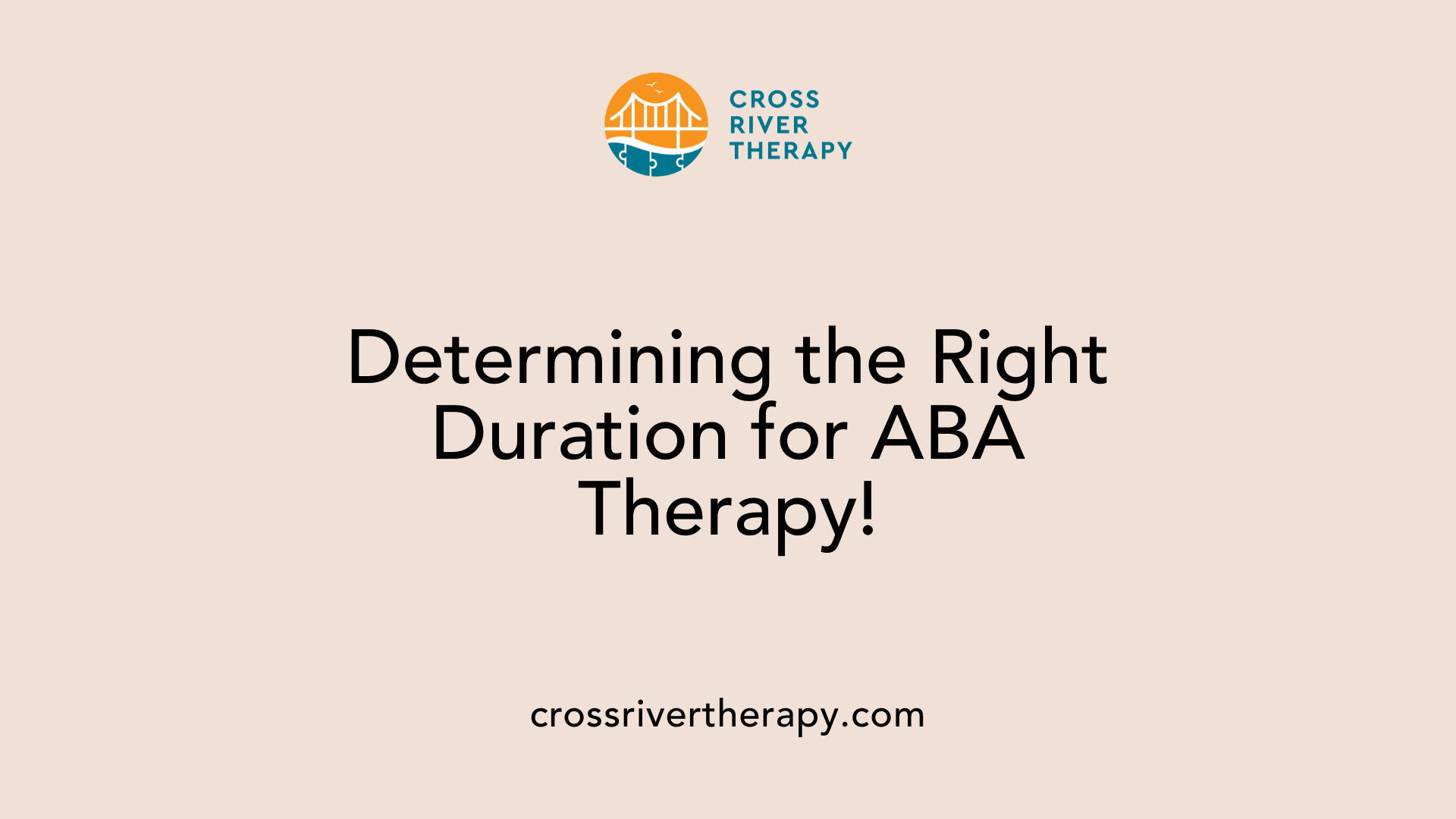ABA Therapy for Child Development Centers
Unlocking Potential: The Power of ABA Therapy in Child Development Centers
Introduction to ABA Therapy
Applied Behavior Analysis (ABA) therapy is a leading therapeutic approach that has garnered widespread recognition for its effectiveness, especially in supporting children with autism. Child development centers worldwide are increasingly incorporating ABA therapy to aid in enhancing developmental milestones, communication, and social skills among their young attendees. This article explores the various facets of ABA therapy, offering insights into its principles, applications, and benefits within these educational environments.
What is ABA Therapy and Its Purpose?

Definition of ABA therapy
ABA therapy, or Applied Behavior Analysis, is a scientific approach focused on understanding behavior and applying intervention techniques to enhance learning and motivation. It utilizes principles of learning to modify behavior patterns through structured methods. This therapy has been validated by extensive research, making it an evidence-based practice widely recognized in healthcare and educational settings.
Purpose of ABA therapy
The primary goal of ABA therapy is to increase positive behaviors while reducing harmful or unwanted ones. Techniques such as positive reinforcement are employed to encourage desirable behaviors; for example, rewarding a child for communicating effectively can lead to more frequent social interactions. Furthermore, ABA therapy aims to support the development of essential skills, including language, social interactions, and daily living activities, ultimately enhancing an individual's quality of life.
Application in child development
ABA therapy is particularly effective in supporting children with autism and developmental challenges. Customization is key, as programs are tailored to the unique needs of each child. This individualization ensures that the interventions remain relevant and impactful. Research indicates that early intervention through ABA can significantly improve long-term outcomes, fostering social engagement and independence. By promoting skill acquisition in structured environments, ABA therapy provides children with critical tools for personal growth and enhanced interactions with peers and caregivers.
Methodologies and Principles of ABA Therapy

What are the methodologies and principles of ABA therapy?
Applied Behavior Analysis (ABA) is a systematic approach that leverages the science of learning and behavior. It aims to enhance positive behaviors while reducing undesirable ones through tailored interventions. A fundamental aspect of ABA therapy involves techniques such as positive reinforcement, where rewarding a behavior increases its future occurrence. This method cultivates motivation and engagement, vital for effective learning.
At the heart of ABA therapy are the A-B-C components: Antecedent, Behavior, and Consequence. This framework helps therapists understand what triggers a behavior, the behavior itself, and the outcomes that follow. Such insights enable more effective behavior modification.
Core methodologies of ABA
ABA employs several methodologies tailored to the specific needs and challenges of each child. These may include:
- Discrete Trial Training (DTT): This structured approach breaks skills into small, manageable components, allowing for focused teaching and practice.
- Natural Environment Training (NET): This methodology encourages learning within natural settings through play and social interactions, fostering practical skills.
- Functional Communication Training (FCT): A technique aimed at teaching children ways to express their needs and feelings effectively, thereby reducing frustration and challenging behaviors.
Moreover, Early Start Denver Model blends ABA principles with developmental approaches to support younger children, enhancing their foundational skills in communication and social interaction.
ABA therapy is an evidence-based practice endorsed by entities such as the US Surgeon General and the American Psychological Association. Its ability to tailor interventions based on detailed assessments ensures that each program not only aligns with specific individual needs but also resonates with family priorities, fortifying the probability of lasting behavioral improvements.
Modern Approaches to ABA Therapy

What is modern ABA therapy?
Modern Applied Behavior Analysis (ABA) therapy represents an advanced stage in the treatment of autism spectrum disorder (ASD). This evidence-based intervention is designed to help individuals reach their highest potential and lead independent lives. Unlike early ABA methods that often relied on rigid, teacher-centered techniques, contemporary practices now prioritize individual needs and preferences.
Today’s ABA therapy is often characterized by a more play-based and family-focused approach. It emphasizes client-centered objectives, where personal happiness is just as important as achieving independence.
Contemporary practices in ABA
Modern techniques such as Pivotal Response Training and Incidental Teaching facilitate natural interactions and intrinsic motivation in children. These strategies encourage learning appropriate behaviors through everyday activities and spontaneous play, providing a more engaging experience than traditional structured methods.
Through this evolution, modern ABA includes personalized treatment plans that are developed based on thorough assessments by Board Certified Behavior Analysts (BCBAs). This ensures that every child receives tailored support, making interventions relevant to their unique skills and daily life needs. Moreover, ethical considerations and family involvement are emphasized, fostering a collaborative environment that promotes consistent skill application across home and therapy settings.
These contemporary methodologies underpin the ongoing effectiveness and adaptability of ABA therapy, ensuring it meets the diverse needs of children with autism and helps them thrive emotionally and socially.
Effective Duration for ABA Therapy in Children

How long should a child stay in ABA therapy?
The duration of ABA therapy is not one-size-fits-all; it can differ widely among children. Typically, the therapy lasts anywhere from 3 to 5 years. Factors influencing this timeline may include the complexity of behaviors, the child's age, and specific family circumstances.
Sessions are structured to occur between 2 to 5 times a week, with each lasting between 3 to 7 hours. It's essential to conduct a thorough assessment by a Board Certified Behavior Analyst (BCBA) to establish an individualized treatment plan tailored to the child's unique needs. Progress monitoring is ongoing, allowing adjustments to be made in therapy schedules as necessary.
Factors influencing therapy length
Duration decisions are typically made collaboratively among the child, their family, and the BCBA. This teamwork focuses on achieving therapy goals and maintaining consistent behavioral improvements.
Increased family involvement can lead to more effective outcomes, further emphasizing the need for individualized therapy plans. The ultimate aim is to ensure that the child reaches their developmental potential within a supportive framework.
Examining ABA Therapy: Benefits and Challenges
What are the benefits of ABA therapy?
ABA (Applied Behavior Analysis) therapy is widely recognized as the gold standard for treating autism spectrum disorder. The key advantages include:
- Personalized Interventions: Each therapy plan is tailored to meet the unique needs of the child, focusing on enhancing communication, social interactions, and self-care skills.
- Skill Development: Research supports that ABA effectively increases essential skills like language development, memory, and attention.
- Positive Outcomes: Many studies endorse ABA's success in improving behavioral control, adaptive behavior, and overall quality of life for children with autism.
- Family Involvement: The therapy emphasizes parental participation, facilitating skill generalization across home and therapy settings.
What are the disadvantages of ABA therapy?
Despite its many benefits, ABA therapy also presents challenges and drawbacks:
- Time and Resource Intensiveness: Families often face logistical hurdles as therapy sessions can require 25 to 40 hours per week, leading to significant time and financial commitments.
- Ethical Concerns: Some criticize the methodology, particularly the use of rewards or punishment, raising ethical questions about the treatment's approach.
- Variable Quality: The effectiveness of ABA can be inconsistent, depending on therapists' qualifications and experience.
- Limited Long-term Research: While many immediate benefits have been documented, long-term outcomes and benefits of intensive therapy remain an area needing further study.
In conclusion, while ABA therapy offers substantial benefits, families should weigh these against the associated challenges before committing to treatment.
Professionals Involved in ABA Therapy
What is the role of professionals involved in ABA therapy?
The professionals involved in ABA therapy are crucial for its success, primarily including Board Certified Behavior Analysts (BCBAs) and trained behavior technicians.
Roles of BCBAs
BCBAs play an integral role in designing and implementing individualized therapy programs for children diagnosed with autism spectrum disorder (ASD). Their responsibilities encompass:
- Assessment: Conducting thorough assessments of each child’s skills and needs to tailor interventions appropriately.
- Program Design: Developing specific behavior intervention plans that set measurable objectives for skill acquisition and behavior modification.
- Supervision: Overseeing the implementation of these plans by behavior technicians, ensuring that therapy is effectively delivered and adapted based on the child's progress.
- Collaboration: Engaging with educators and families to ensure therapy strategies are integrated into daily routines for consistency.
Responsibilities of Behavior Technicians
Behavior technicians work directly with children, translating the strategies outlined by the BCBA into practice. Their main tasks include:
- Implementation: Applying the techniques and principles established in the treatment plans during hands-on therapy sessions.
- Data Tracking: Monitoring the child’s progress and adapting techniques as necessary based on collected data.
- Communication: Regularly updating parents and caregivers about progress and strategies used, fostering a collaborative support system. Overall, the collaboration between BCBAs and behavior technicians is essential for optimizing the child's learning experiences and outcomes in ABA therapy.
The Impact of Parental Involvement

Importance of Parent Participation
Parental involvement is not just beneficial but essential for the effectiveness of ABA therapy. Families play a pivotal role in the success of behavioral interventions, as their participation enhances skill generalization across home and community settings.
Research indicates that children whose parents actively engage in therapy tend to show significant improvements. The consistency of applying learned techniques at home reinforces the education and behavior modifications introduced during therapy sessions.
Training for Parents in ABA
Training parents in ABA techniques amplifies their confidence and efficacy in managing behaviors. Equipped with these skills, parents can reduce their stress levels and increase satisfaction with the therapeutic process.
Active involvement ensures that reinforcement strategies used at home align with those employed by therapists, helping to maintain the skills learned during sessions. Ultimately, parental participation is a critical component that drives developmental progress and the overall success of ABA therapy interventions, leading to better outcomes for children with autism.
Comparing ABA to Developmental Therapy
How does ABA therapy compare with developmental therapy?
ABA therapy, or Applied Behavior Analysis, primarily focuses on teaching skills through repetitive practice and reinforcement. This therapy aims to achieve mastery of specific, clearly defined tasks. For children with autism, this structured approach proves highly effective, as it emphasizes measurable outcomes and clear goals that guide the learning process.
On the other hand, developmental therapy takes a broader view of child development. It concentrates on the overall growth of the child, encouraging dynamic thinking and the ability to generalize learned skills across different settings. This model promotes holistic development rather than solely focusing on the mastery of individual tasks.
Both therapeutic approaches offer significant benefits:
ABA Therapy:
- Systematic and structured
- Focused on behavior modification
- Effective for skill acquisition in children with autism
Developmental Therapy:
- Holistic focus on overall growth
- Encourages adaptability and skill generalization
- Targets emotional and social aspects of development
Though both therapies share the goal of enhancing a child’s functioning, ABA's systematic nature diverges from the adaptable and broad-based methods of developmental therapy in promoting the best outcomes for children with varying needs.
Inclusive Education through ABA Therapy
Integration of ABA in Educational Settings
ABA therapy is increasingly being integrated into educational environments, particularly in preschool programs designed for children with autism. This integration promotes collaborative efforts between educators, therapists, and parents, ensuring that educational plans are personalized and address each child's unique developmental needs. The emphasis on individualized curriculum plans allows for relevant interventions that resonate with the child’s interests and family priorities.
Furthermore, a low student-to-staff ratio, such as that provided by programs like Little Steps, allows for attentive instruction, which is crucial for effective learning. The combination of structured routines and tailored support in these settings plays a significant role in enhancing children's overall skill acquisition and socialization.
Benefits for Other Behavioral Challenges
While ABA therapy is well-known for supporting children with autism, its methodologies are effective for various behavioral challenges, including ADHD and OCD. The principles of ABA, such as positive reinforcement and structured teaching, create a foundational structure that benefits a broad range of developmental issues. By implementing ABA techniques within school systems, children facing diverse challenges receive the support they need to improve communication, social interactions, and overall educational outcomes.
Customizing ABA Therapy for Optimal Outcomes
Tailoring ABA Programs to Individual Needs
Each child with autism presents a unique set of strengths, challenges, and learning styles. Effective ABA programs are customized based on thorough assessments by Board Certified Behavior Analysts (BCBAs). These assessments consider various factors, including the child's skills, behavior patterns, and family goals, ensuring that the treatment plan resonates with the child's specific needs.
The ideal age to start ABA therapy, typically between 2 to 6 years old, allows for the early identification and support of developmental challenges. Programs are generally implemented with the understanding that durations can range from 3 to 5 years, adapting as the child grows.
Strategies for Personalization
A variety of strategies are deployed to personalize ABA therapy effectively:
- Positive Reinforcement: Rewarding desired behaviors encourages their recurrence.
- Discrete Trial Training (DTT): Uses structured teaching to break down skills into manageable parts.
- Natural Environment Training (NET): Encourages learning in everyday settings to enhance practical application.
- Parent Training: Involves equipping caregivers with strategies to support skill transfer into daily life.
With such individualized approaches, ABA therapy can greatly improve communication, social skills, and daily living abilities, leading to better overall outcomes for children.
Conclusion
ABA therapy stands as a cornerstone in contemporary approaches to child development within centers, offering personalized interventions that cater to the unique needs of each child. Its application goes beyond mere skill acquisition, promoting overall well-being and independence. With the support of dedicated professionals and active parental involvement, children can achieve significant milestones, reducing developmental challenges and enhancing their quality of life. As research continues to evolve, ABA therapy remains a pivotal resource in educational and therapeutic settings, championing the cause of inclusive and effective support for children with autism and related disorders.
References
- Applied Behavior Analysis (ABA) | Autism Speaks
- ABA Therapy and Child Development Centers
- ABA Therapy and Child Development Centers
- ABA Therapy for Child Therapy Centers
- How Does ABA Therapy Fit in Child Centers? - Magnet ABA
- How ABA Therapy Supports Child Development Centers?
- ABA Therapy for Child Development Support
- Developmental Preschool vs. ABA - Lighthouse Autism Center



